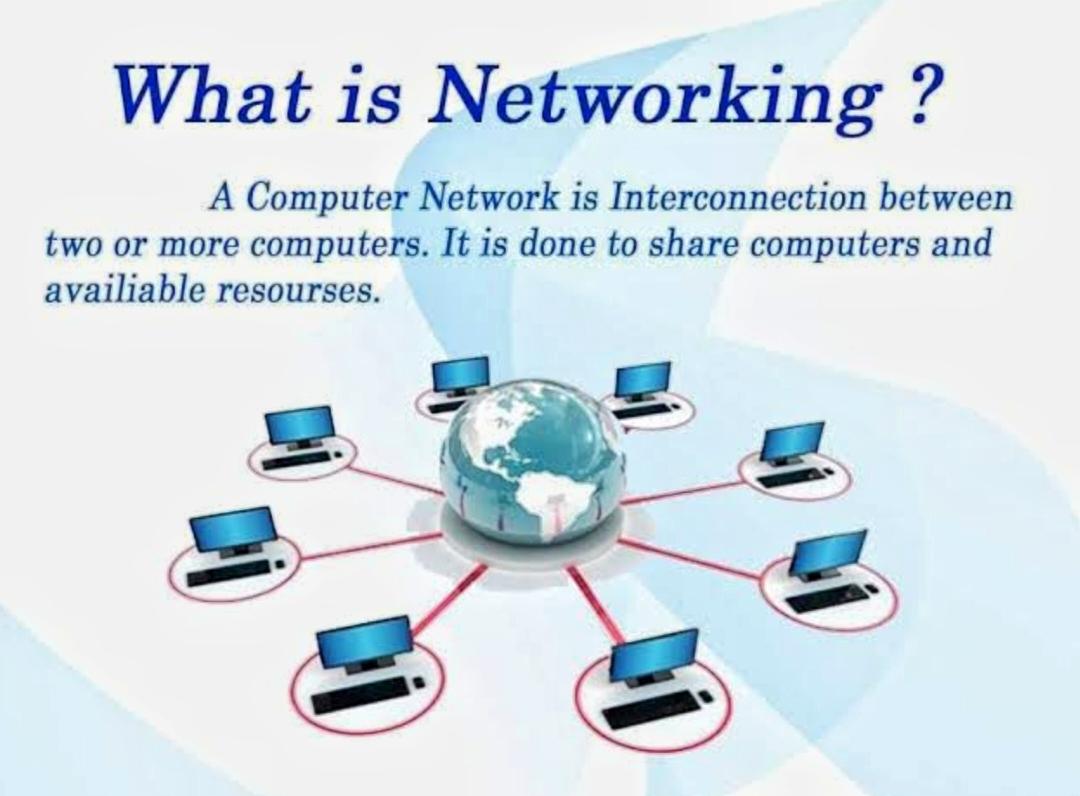NETWORKING
Networking: Connecting the World in the Digital Age
In today’s technology-driven world, networking plays a vital role in connecting people, devices, and systems across the globe. Networking refers to the practice of linking computers and other devices so that they can share information, resources, and services. From using social media and sending emails to online banking and cloud computing, networking is the backbone of all modern communication.
What is Networking?
Networking is the process of connecting two or more devices, such as computers or smartphones, so they can communicate with each other. A network allows devices to exchange data, share files, printers, internet connections, and much more. This connection may be wired or wireless depending on the technology used.
Types of Networks
1. LAN (Local Area Network):
A network limited to a small area, such as a school, office, or home. LANs provide fast and secure communication within a limited space.
2. WAN (Wide Area Network):
This network covers a large geographical area, like a city, country, or even the entire world. The internet is the largest WAN in existence.
3. MAN (Metropolitan Area Network):
MAN connects devices within a city or large campus. It is larger than a LAN but smaller than a WAN.
4. PAN (Personal Area Network):
A small network created around an individual, usually connecting devices like smartphones, laptops, and smartwatches via Bluetooth or Wi-Fi.
Key Components of a Network
Router: Directs data traffic between networks
Switch: Connects multiple devices within a LAN
Modem: Connects a network to the internet
Cable/Wireless Medium: The path through which data travels
Types of Network Connections
Wired Networks: Use cables like Ethernet for fast and secure transmission.
Wireless Networks: Use radio signals (Wi-Fi, Bluetooth) for easy and flexible connectivity.
Importance of Networking
Networking has made the world smaller and more connected. It enables: ✅ Fast communication through email, chat, and video calls
✅ Information sharing and file transfer
✅ Online education and virtual classrooms
✅ E-commerce and digital payments
✅ Cloud storage and remote work
✅ Social media interaction and global connectivity
Without networking, modern services like Google, YouTube, WhatsApp, online shopping, and remote healthcare would not exist.
Challenges in Networking
Despite its benefits, networking faces issues such as:
Cybersecurity threats like hacking and viruses
Network congestion and slow connections
Privacy concerns and data theft
These challenges require strong security measures, including firewalls, antivirus software, and secure passwords.
Conclusion
Networking has revolutionized communication and information sharing in the digital age. It connects people, businesses, and governments, making the world more accessible and efficient. As technology continues to progress, networking will remain a key foundation of modern society, enabling smarter communication, innovation, and global collaboration.

